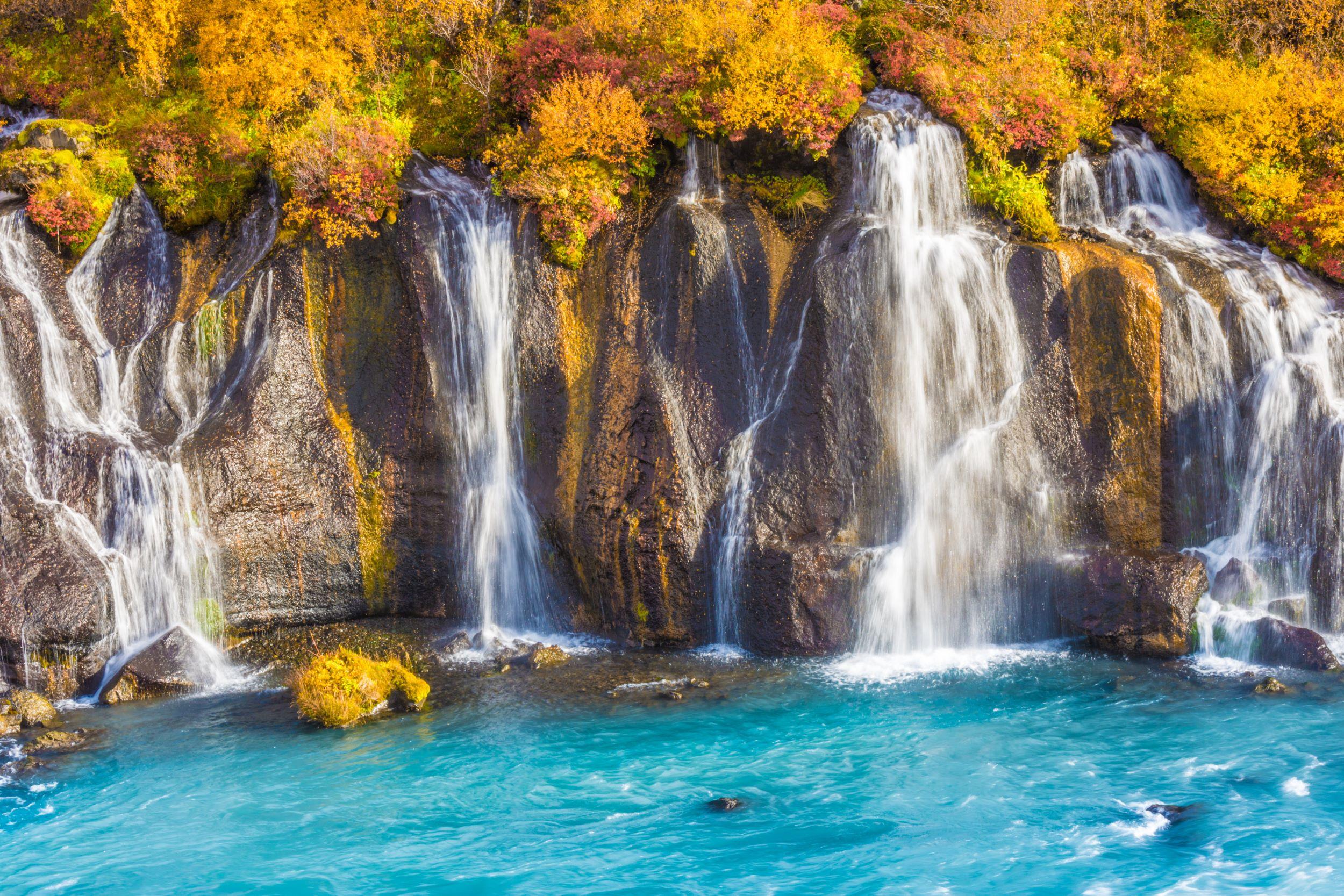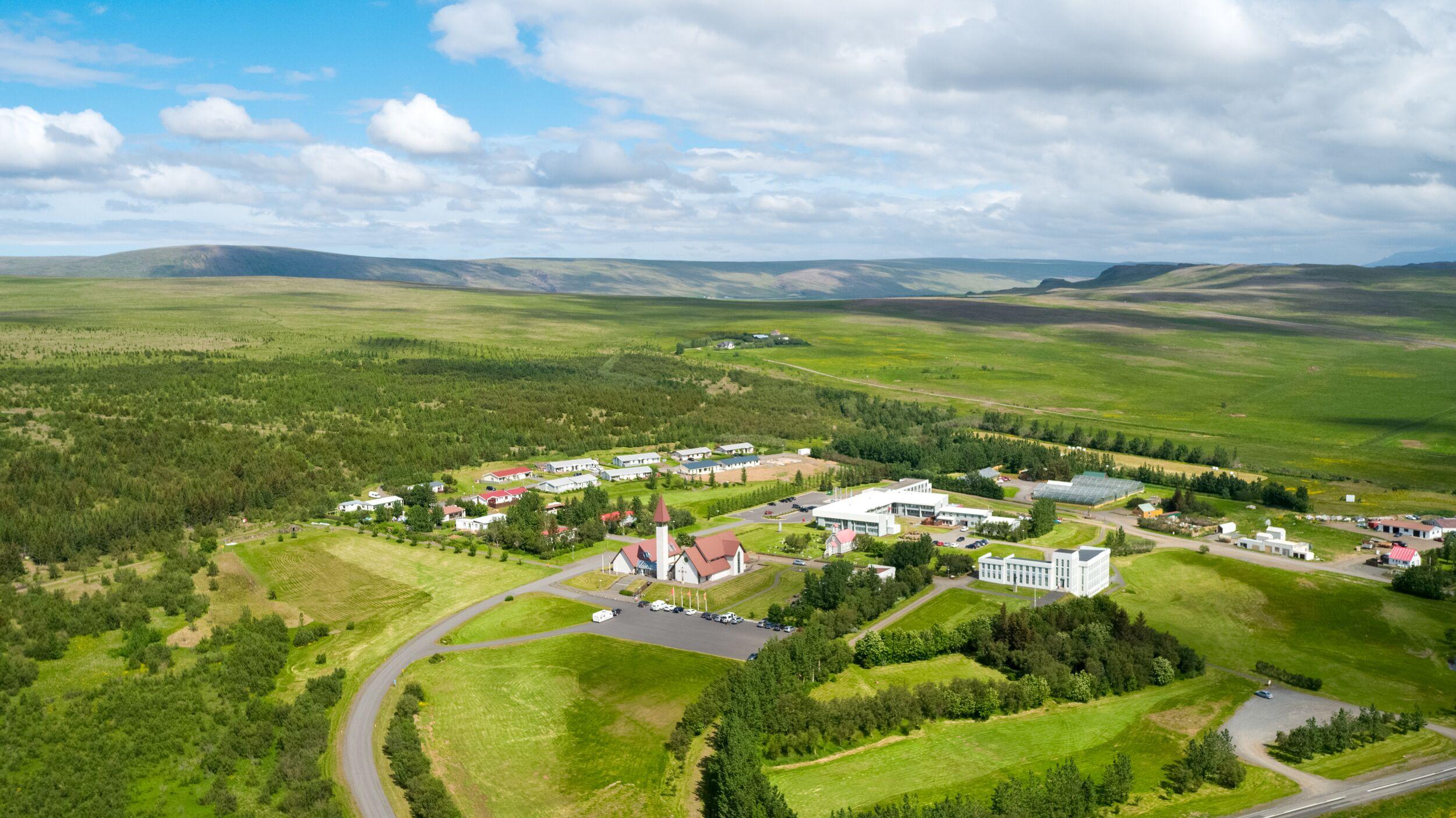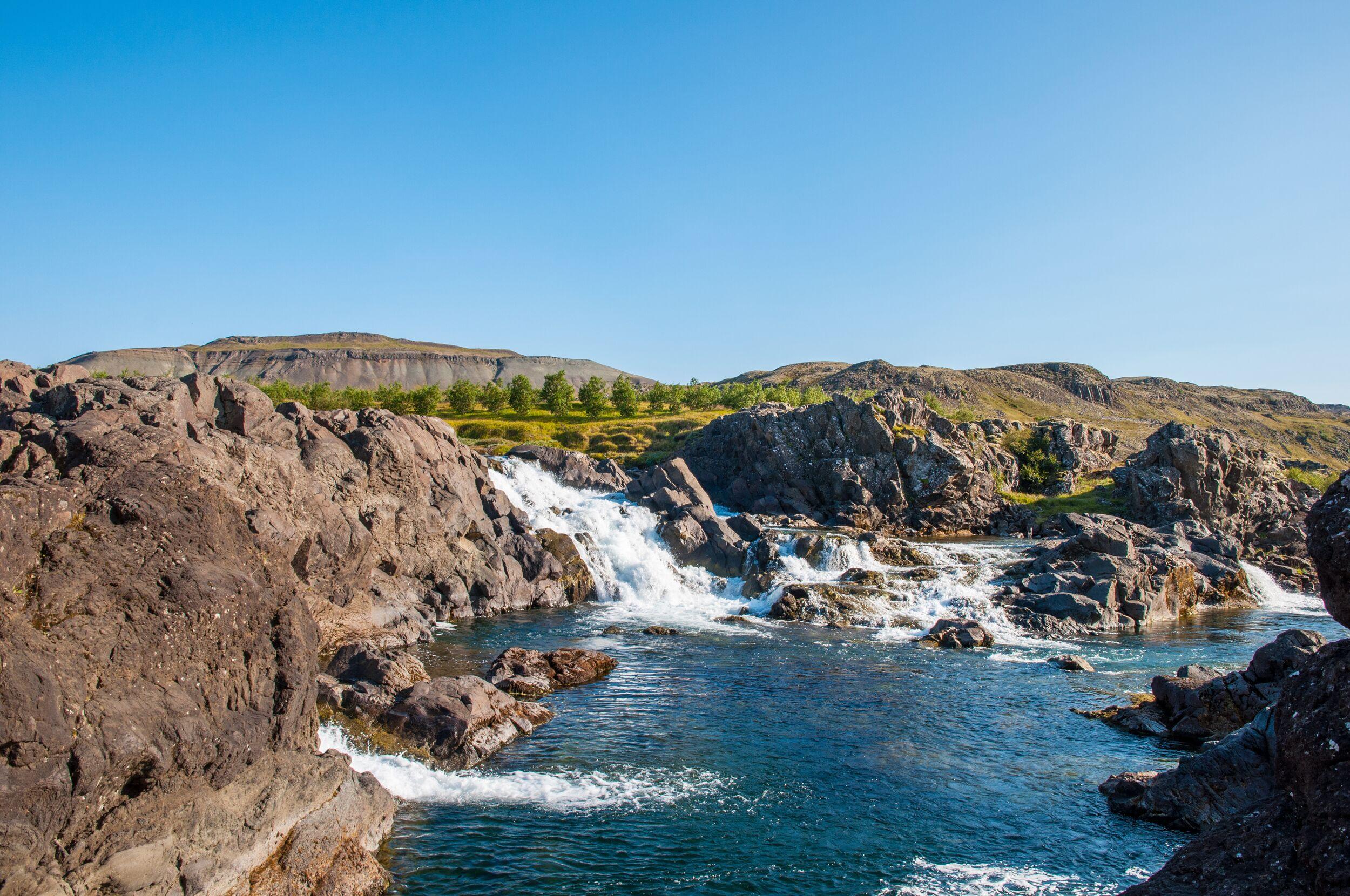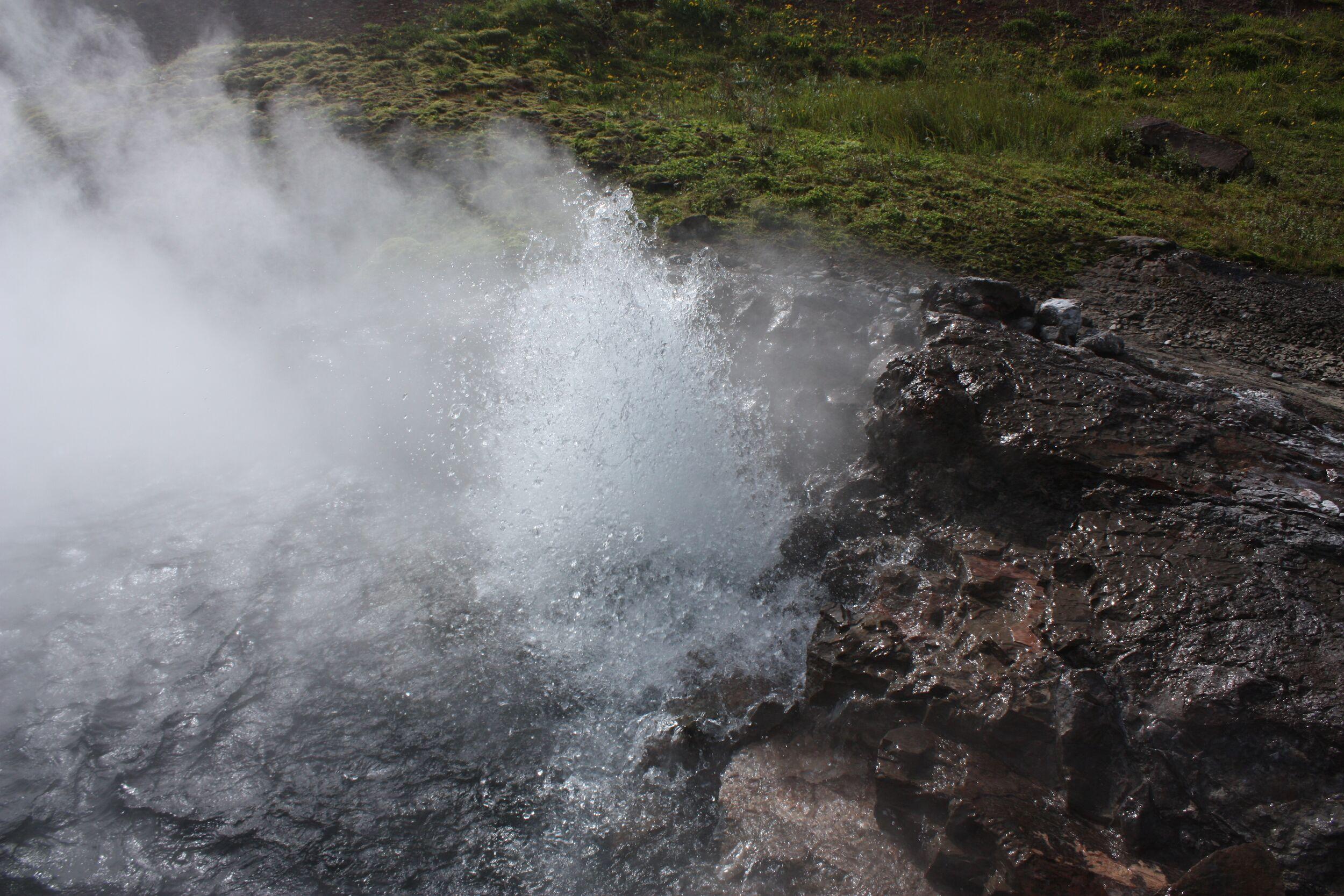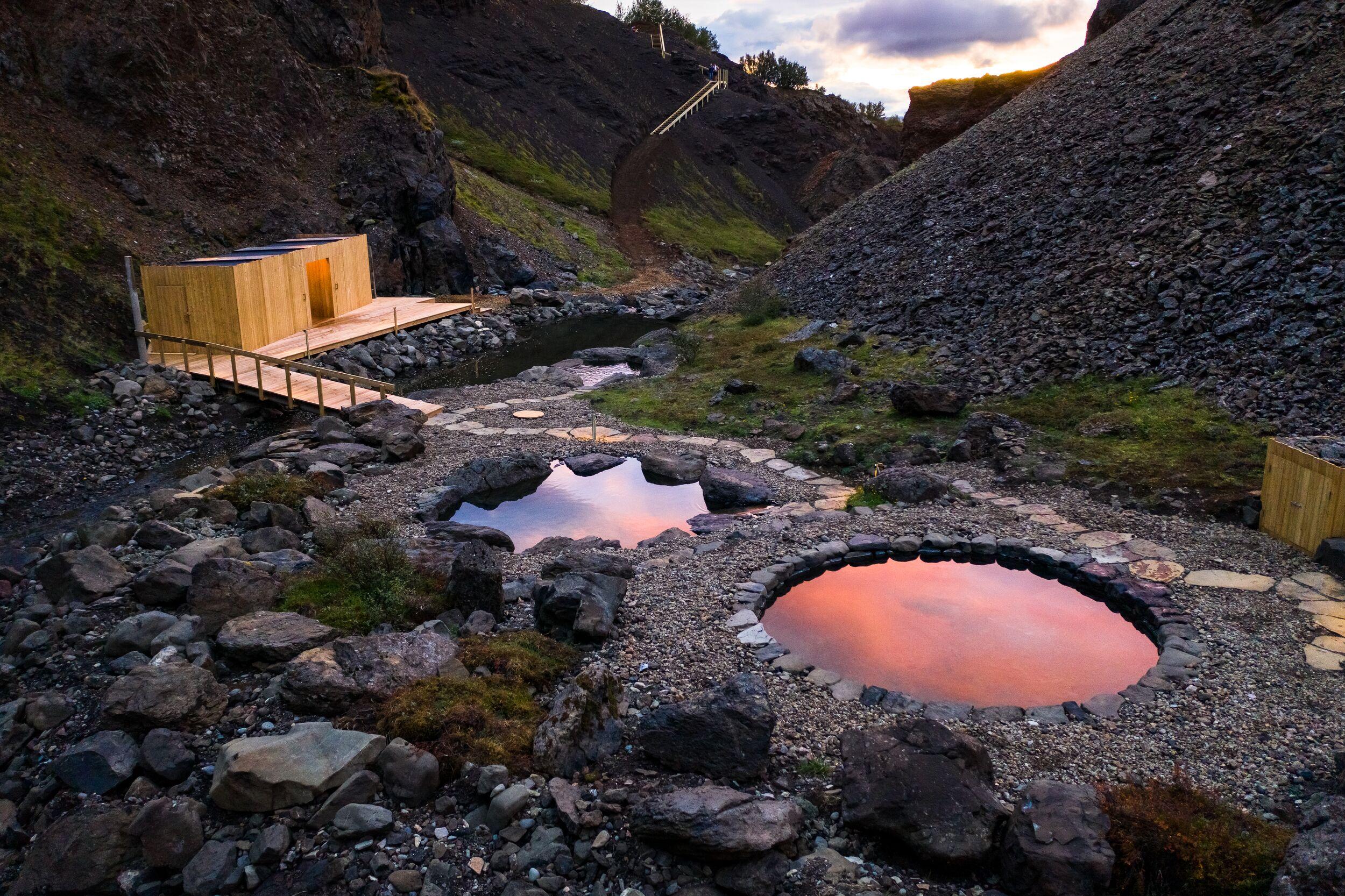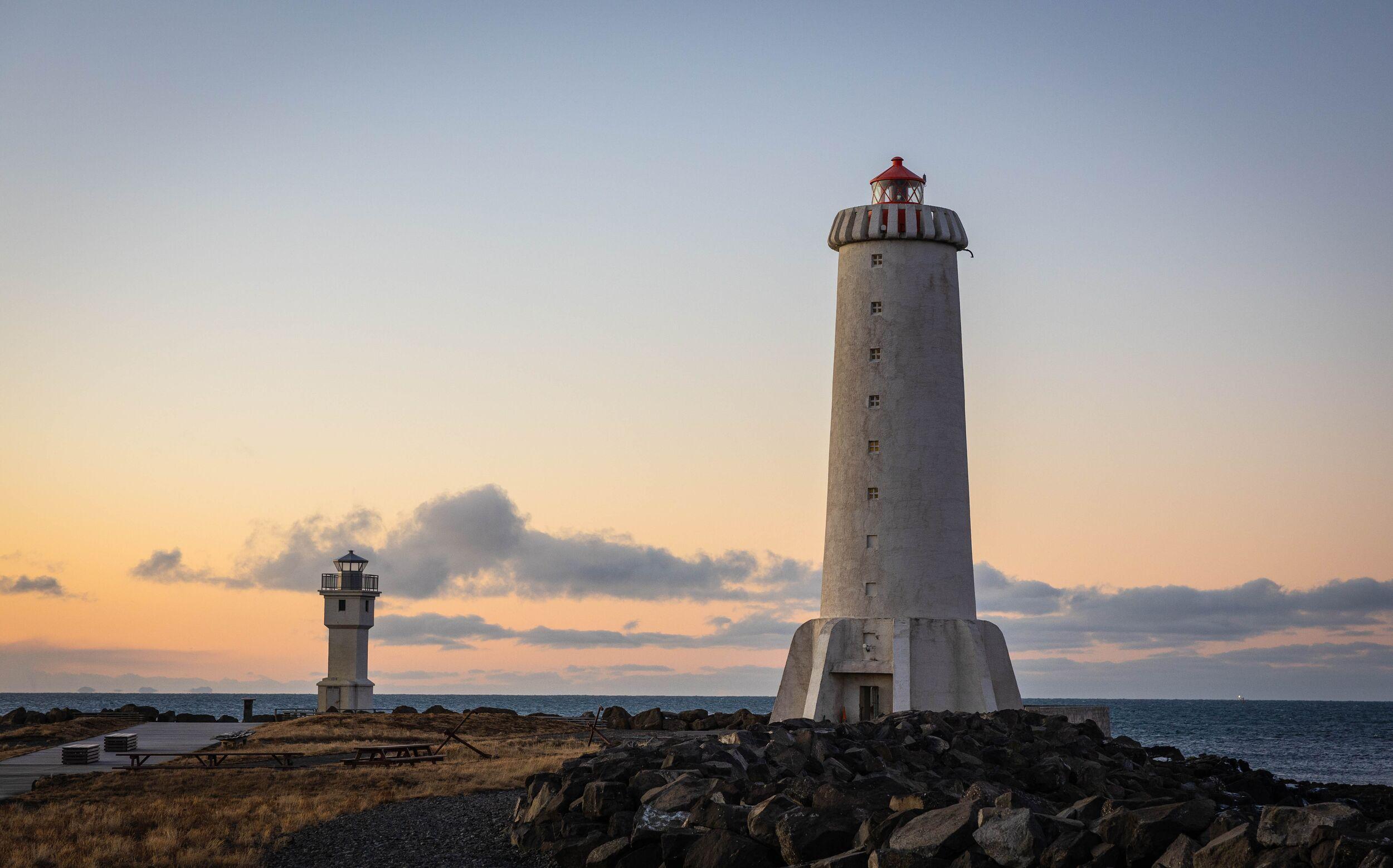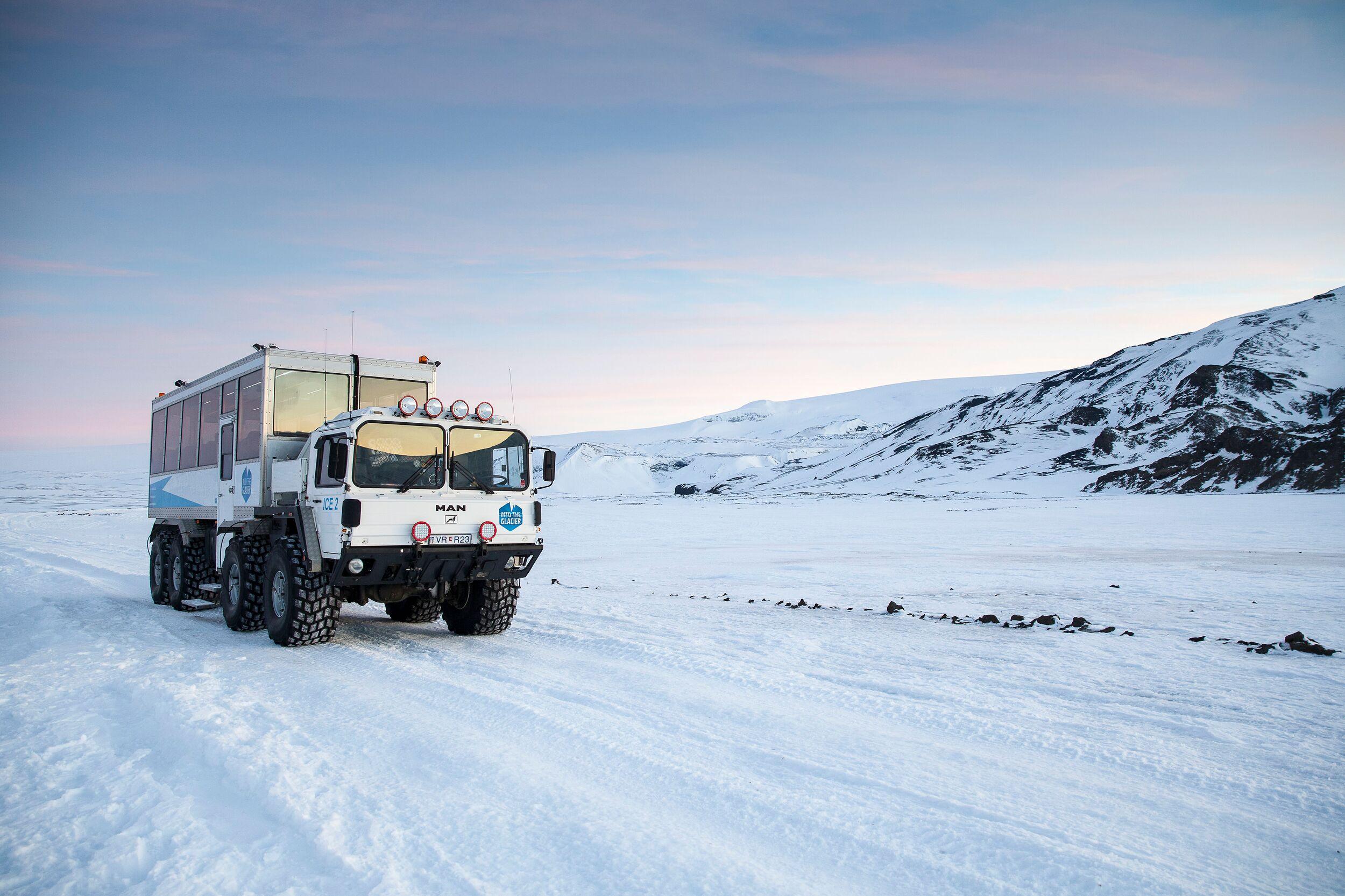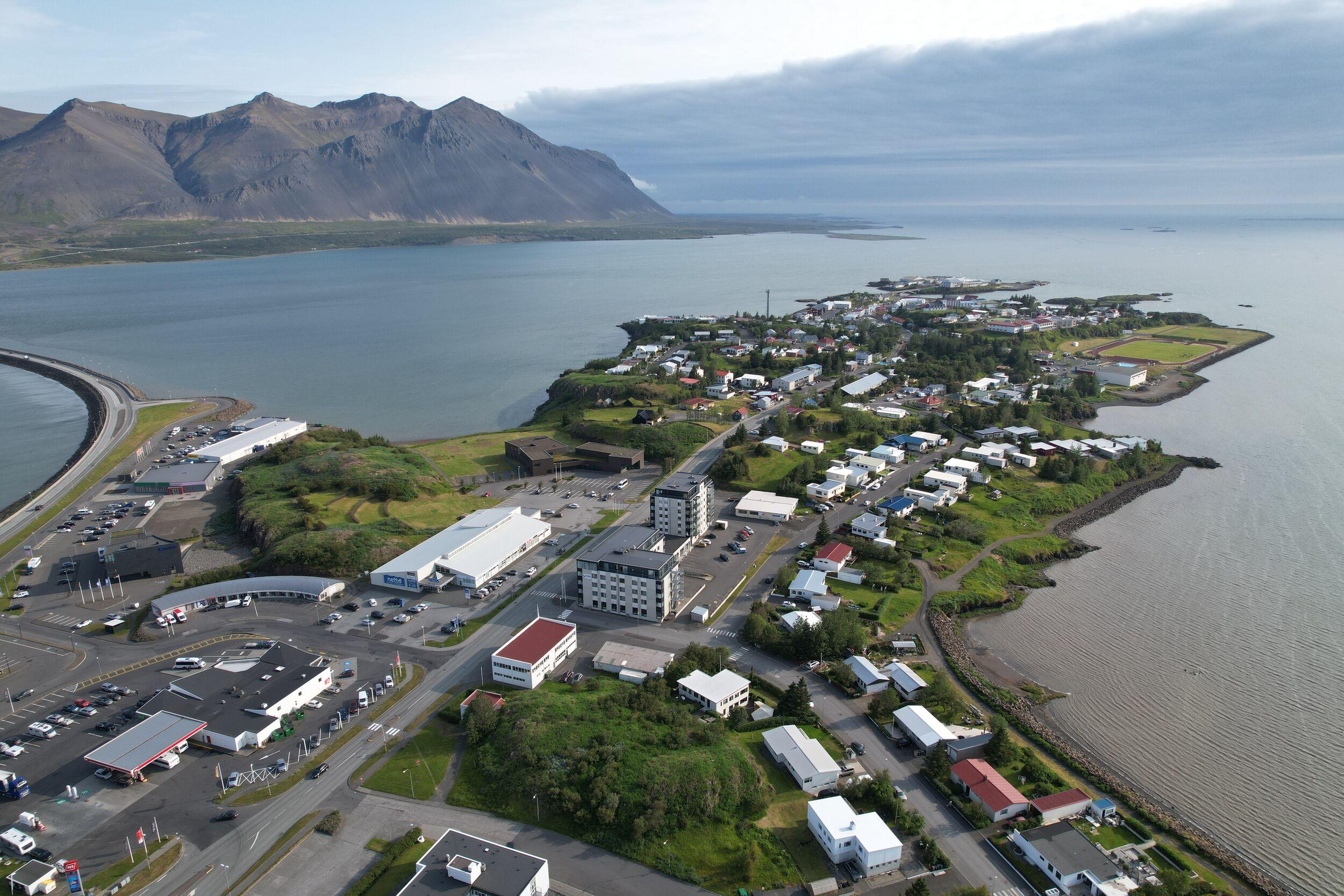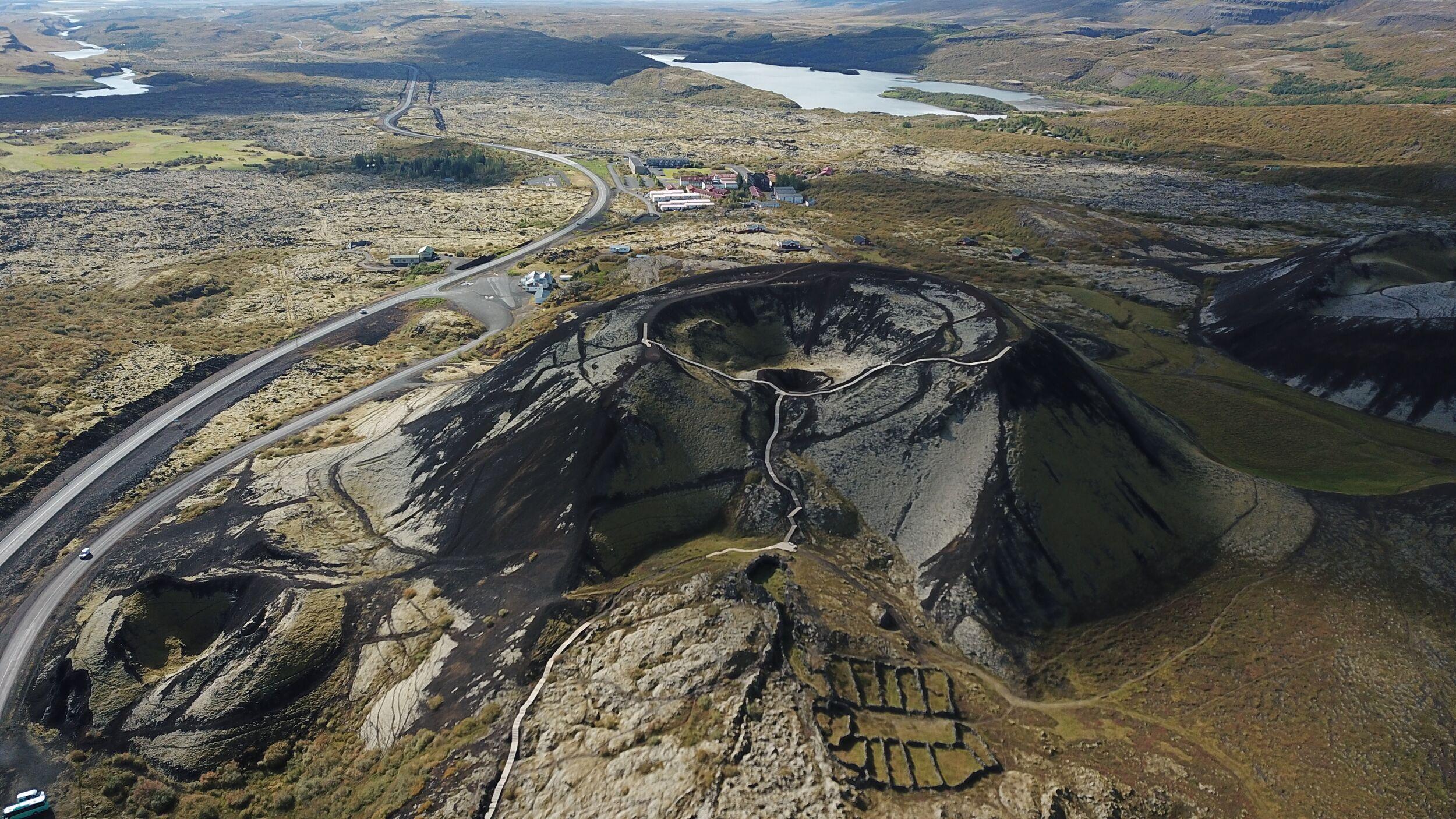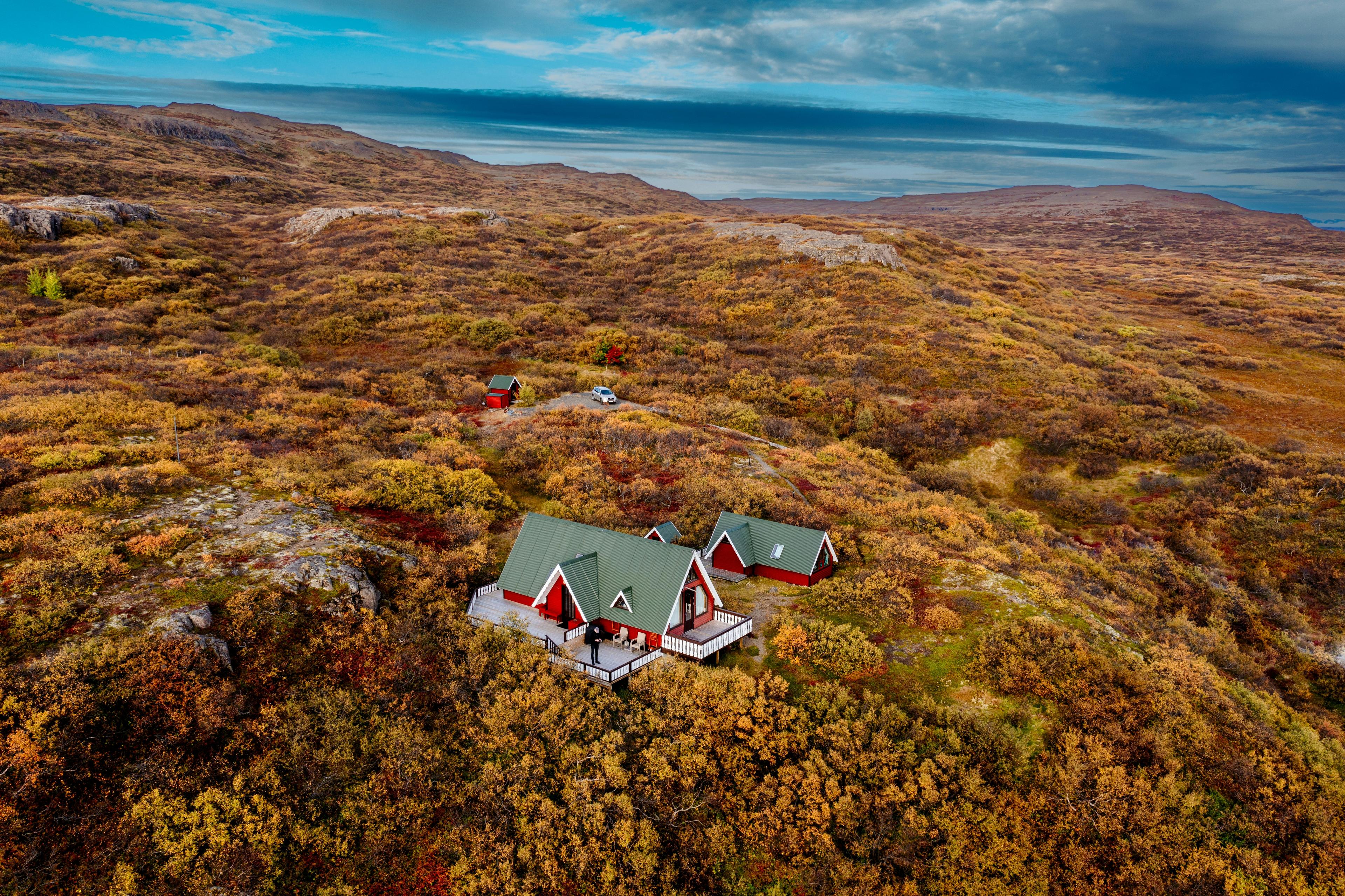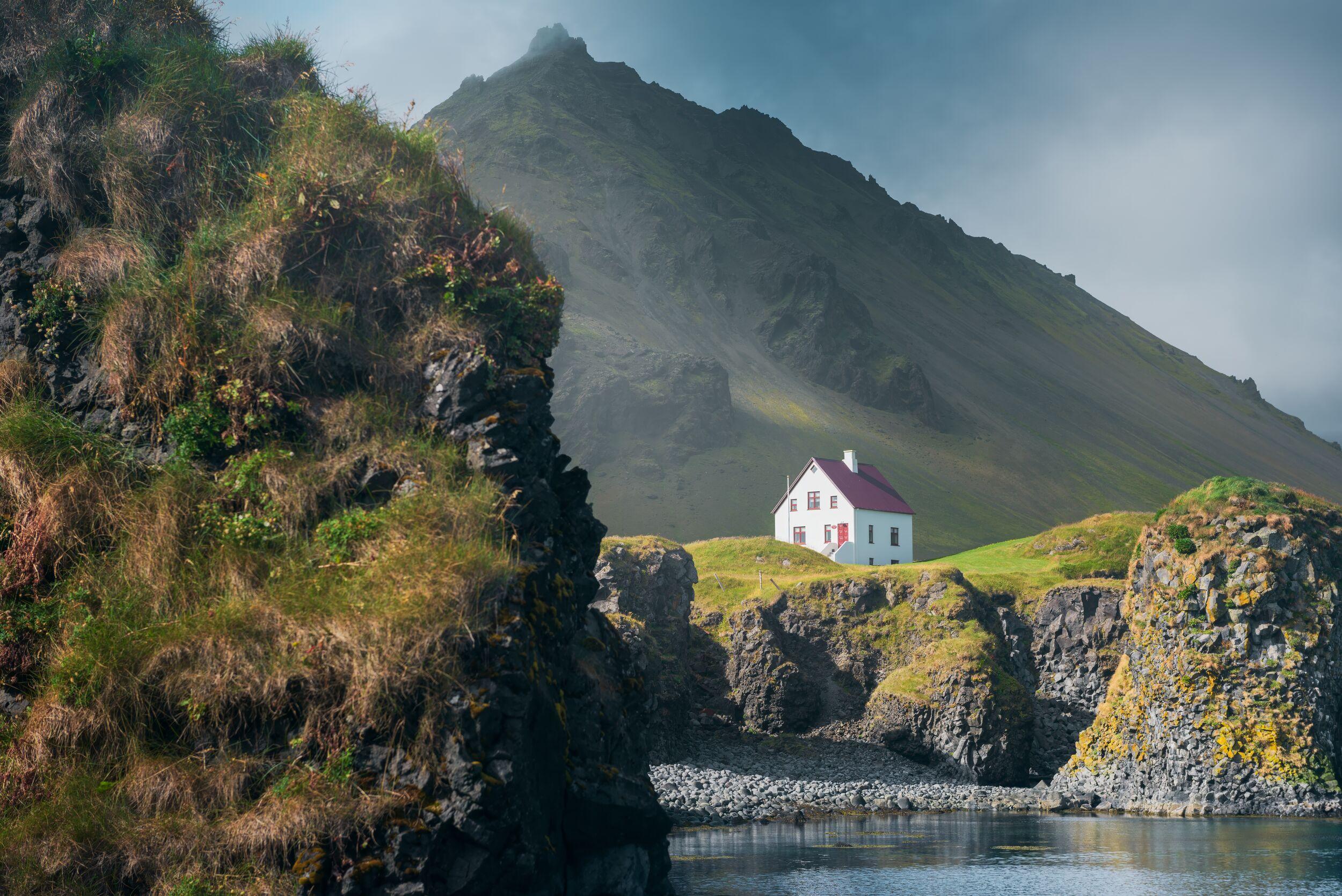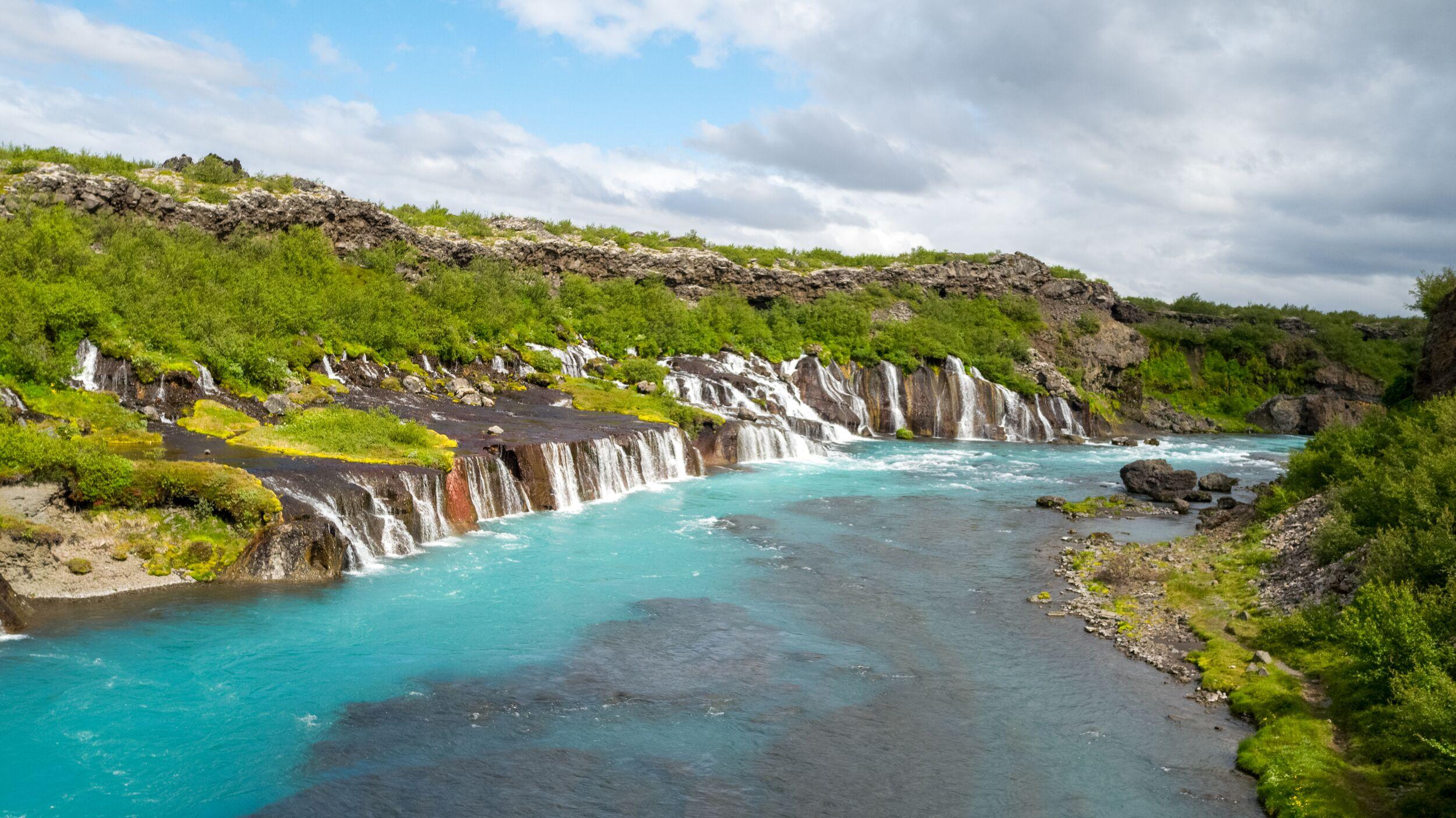
- Best time to visit
- All year round
- Coordinates
- 64.70108, -20.86909
- Distance from Reykjavík
- 80-140 km (50-90 mi)
The Silver Circle Route
The Silver Circle, unlike its more famous Golden cousin, often flies under the radar. Yet, this overlooked driving route is a must for any traveller keen to get off the beaten track, no mean feat this close to Iceland’s capital region.
Organised tours offer a sociable, easy alternative to self-drive itineraries, but however you choose to tackle it, this area is certain to make a lasting impression.
Volcanic activity laid the groundwork for this remarkable place, but meltwater from the area’s glaciers feeds local rivers and continues to sculpt the landscape. The area is geothermally active, home to Europe’s most powerful hot spring, and there are numerous geothermal baths and spas in the area, including Krauma and Húsafell Canyon Baths. Snorralaug, perhaps the oldest known pool in the country, serves as a reminder that soaking in a hot tub has been part of Icelandic culture for centuries.
Accessing the Silver Circle Route is straightforward as it connects to the ring road at Borgarnes in West Iceland, about 70km from Reykjavik. This means it’s easy for self-drivers to visit for the day or to add the Silver Circle onto a longer road trip. This route can also act as a bridge between the Golden Circle and other West Iceland tourist destinations such as those on the Snæfellsnes Peninsula.
The Silver Circle in Iceland follows a route that is approximately 146km long and broadly follows an east north easterly trajectory extending into Iceland’s interior from Borgarfjörður.
It comprises two distinct parts. The first is a loop that is formed from a section of Route 1 and a smaller road, the 50. Secondly, at the intersection between the 50 and the 518 at Deildartunguhver an out and back part enables drivers to reach Húsafell and Víðgelmir further inland.
It’s possible to tackle the entire route in a day, particularly in summer, but there’s much to be gained from slowing down the pace and visiting it over two. If you’re considering an overnight stop, then within the Silver Circle Húsafell has much to recommend it; Reykholt is another stellar choice. Accommodation in Borgarnes may suit those continuing their trip in Snæfellsnes or north along the ring road.
Out of season, some services close, road surfaces can become slippery and the highland roads beyond the Silver Circle become impassable because of snowfalls. However the tempting prospect of seeing photogenic autumnal vegetation or wintry icicles ensures a steady stream of travellers along this route throughout the colder months.
Highlights of the Iceland’s Silver Circle Route
Deildartunguhver & Krauma Geothermal Nature Baths
If you’re coming from the ring road, the most obvious attraction to begin with is Deildartunguhver. The powerful flow of water gushes out of the earth at a mind-blowing rate of 180 litres a second. It’s scalding hot, with an average temperature of around 97°C.This geothermal spring is responsible for supplying hot water and heating to thousands of people in the wider area via a lengthy pipeline.
Minerals stain the rock red, and the humidity enables mosses and a unique plant called tunguskollakambur, the tongue deer fern, to thrive here – this is the only place in the world where you’ll find it. Once you’ve toured the site, you’ll probably want to don your swimsuit for a relaxing soak at Krauma Geothermal Nature Baths next door. To be able to bathe in it safely, it’s necessary to dilute it with ice-cold glacial water to bring the temperature down.
Unique Waterfalls
The Silver Circle route boasts three standout waterfalls: the joint waterfalls Hraunfossar and Barnafoss and the hidden gem Glanni. Hraunfossar and Barnafoss are located close to each other but are very different in appearance. Hraunfossar is wider, with numerous rivulets of water cascading over the edge of the Hallmundarhraun lava field. A viewing platform opposite makes it easy to appreciate its beauty. Just upstream you’ll encounter Barnafoss. Here, the water has to funnel through a narrow gap between the rock which creates plenty of white water as it crashes down to the river below.
Glanni is a picturesque, multi-tiered waterfall located on the Norðurá River near Bifröst. Surrounded by lava fields and lush greenery, it is believed to be home to elves and hidden folk in Icelandic folklore.
Fire and Ice
As with many places in Iceland, the Silver Circle has been forged from fire and sculpted by ice. An eruption back in 900AD led to the formation of an impressive lava cave called Víðgelmir.
At 1585 metres long it is the largest of its kind in the country. Enter via a collapsed section at its north end. Walkways and lighting have been installed to ensure that it’s safe to visit. They’ll supply a helmet and head torch for the 1.5 hour tour, but you’ll need sturdy shoes and suitably warm clothing – the temperature below ground is chilly year-round.
Langjökull lies within easy reach of Iceland’s Silver Circle making this remarkable glacier an easy add-on. It’s the second biggest ice cap in the country. Though considerably smaller than Vatnajökull, its size is ample for various glacier-related pursuits such as snowmobiling.
However it does have one advantage over its larger counterpart: its ice cave is accessible year round. Participants on the Into The Glacier tour travel by specially modified truck up onto the glacier before hiking into a tunnel cut into the side of the glacier. This icy shaft opens out into a cavernous space, which is quite something when you realise the work that’s gone into creating it.
Reykholt: the birthplace of Icelandic culture and history
The Silver Circle’s contribution to Icelandic culture and history is centred on the village of Reykholt which was once home to Snorri Sturluson. He was born in the latter part of the 12th century and held the role of lawmaker at the Alþing parliament at nearby Þingvellir for a time.
He was also a dedicated writer and it’s through his books that we know so much about what the country was like back then. Prose Edda gives us an insight into Norse mythology, while Heimskringla tells the story of the Norwegian kings under whose jurisdiction Iceland fell.
He also authored Egil’s Saga, a book that helps us understand how people lived in the early days. Learn more about him and the influence he had in Snorrastofa, the cultural centre that bears his name.
Other Must-Sees in the Silver Circle Area
Alongside these major sights, there are numerous other places that you may choose to visit. Set your own pace following a self-drive itinerary or opt for a private Silver Circle tour which can be customised to match your interests and needs. Reykjavik Excursions’ carbon-neutral Silver Circle day tour is a good choice for any traveller keen to minimise their environmental impact.
Among the other attractions you’ll find along the Silver Circle route is a small forest called Danielslundur. Located at the western end of the region close to Route 1, it contains some short but attractive hiking trails and a viewpoint overlooking Borgarfjörður.
At the opposite end of the route, Húsafell is a good base for active travellers keen to enjoy the great outdoors. Golf, horse riding and hiking can all be arranged locally and you can soak your aching muscles in the Húsafell Canyon Baths at the end of the day.
Animal encounters along the Silver Circle
While wild animal encounters are incredibly rare, though Arctic foxes are sometimes seen in rural parts of West Iceland, one thing you can guarantee is horses. Stulureykir Horse Farm is a riding stables that is located just off the 518 not far from the junction with the 50.
They offer beginner-friendly short rides along the nearby river which are suitable for most ages. Further along the 518 you’ll come across Háafell Goat Farm. They’ll let you interact with their herd of goats as well as educate you about the way they are reared. Take home a souvenir purchase of soap or cheese made from their milk.
Tours to the Silver Circle
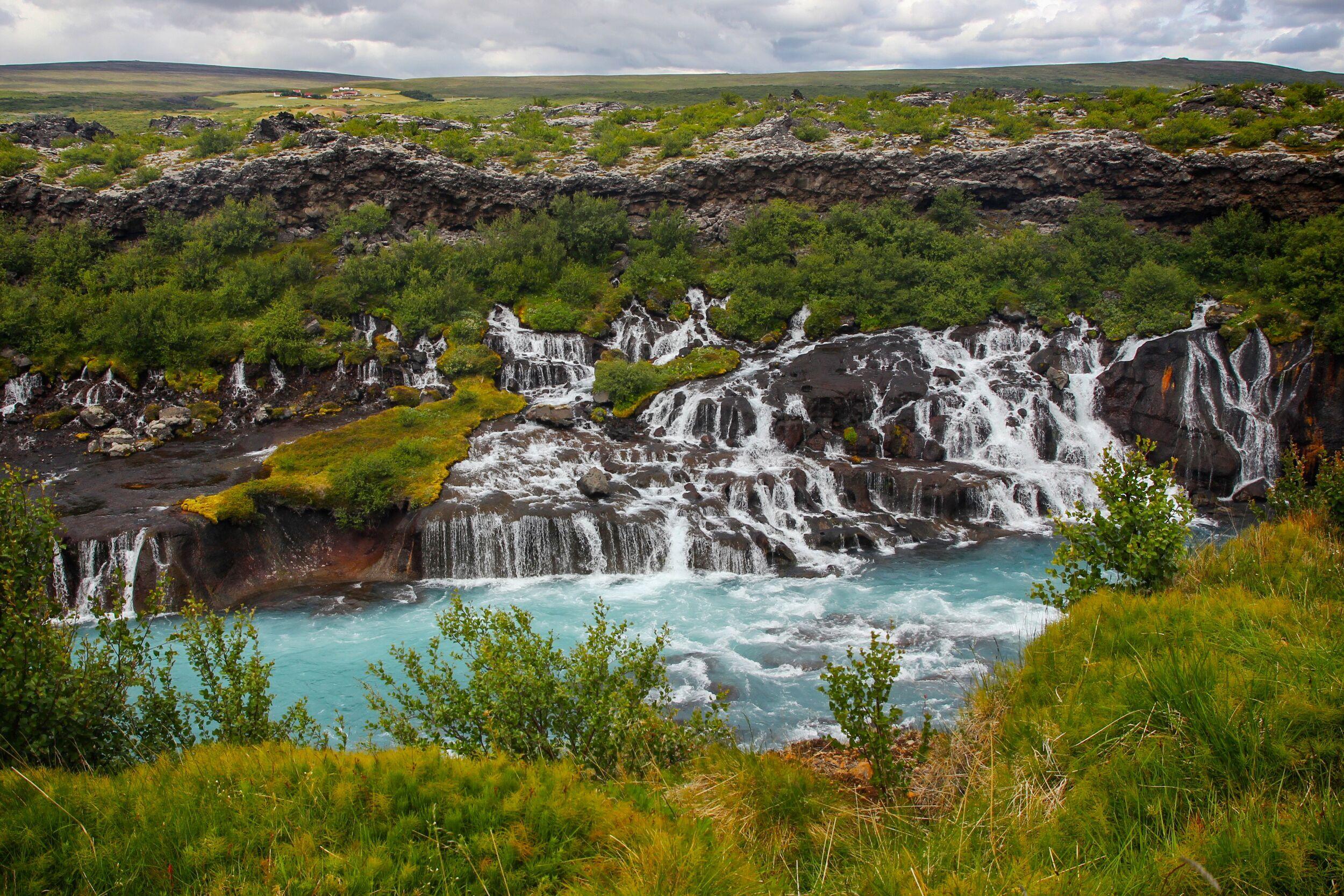
Silver Circle in West Iceland
Discover the hidden gems of West Iceland on the Silver Circle Tour—a carbon-neutral adventure through stunning landscapes, fascinating history, and authentic local experiences.
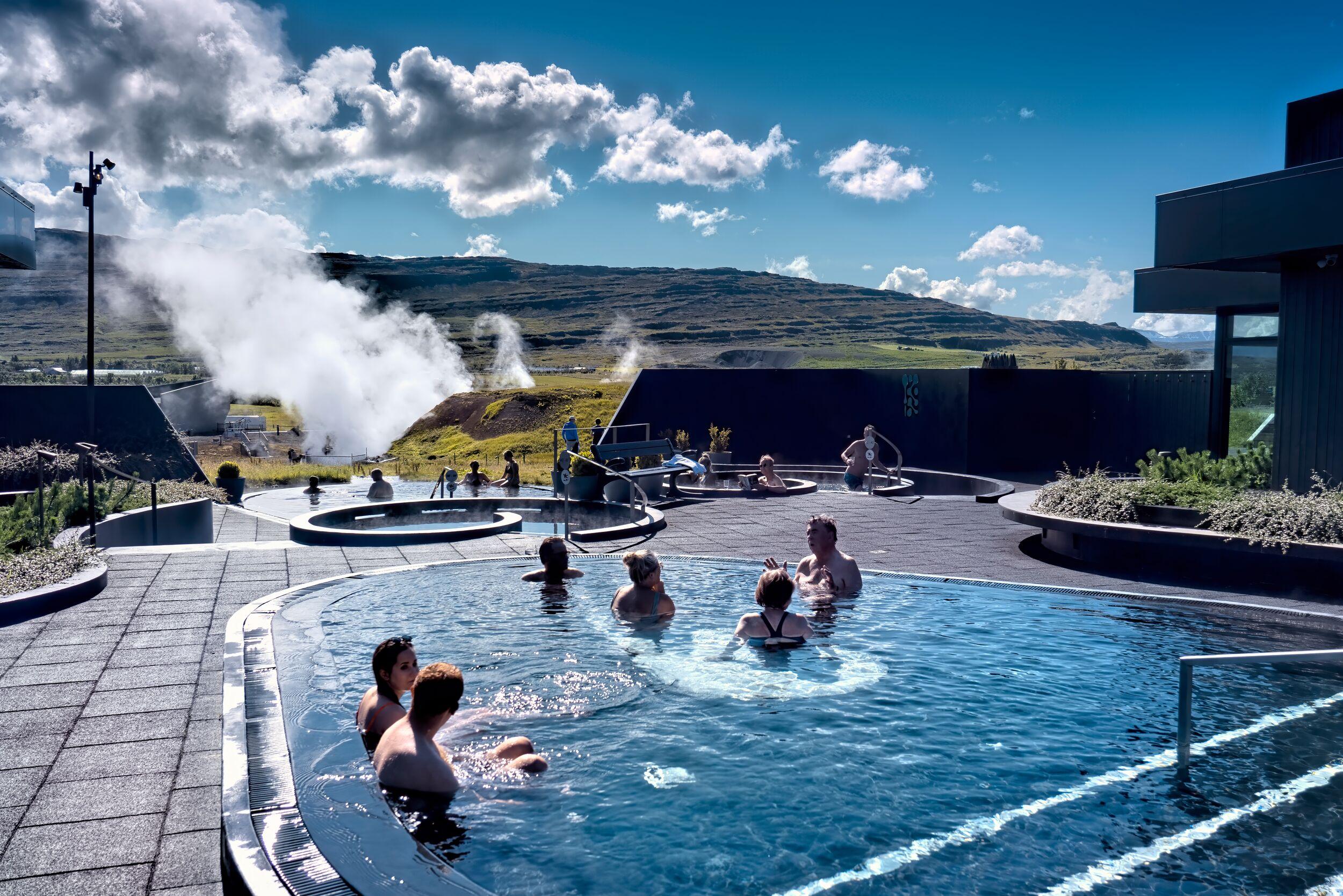
Silver Circle with Krauma Geothermal Baths
Explore West Iceland's Silver Circle, a carbon-neutral tour showcasing stunning landscapes, rich history, authentic experiences, and a relaxing stop at Krauma Geothermal Baths.
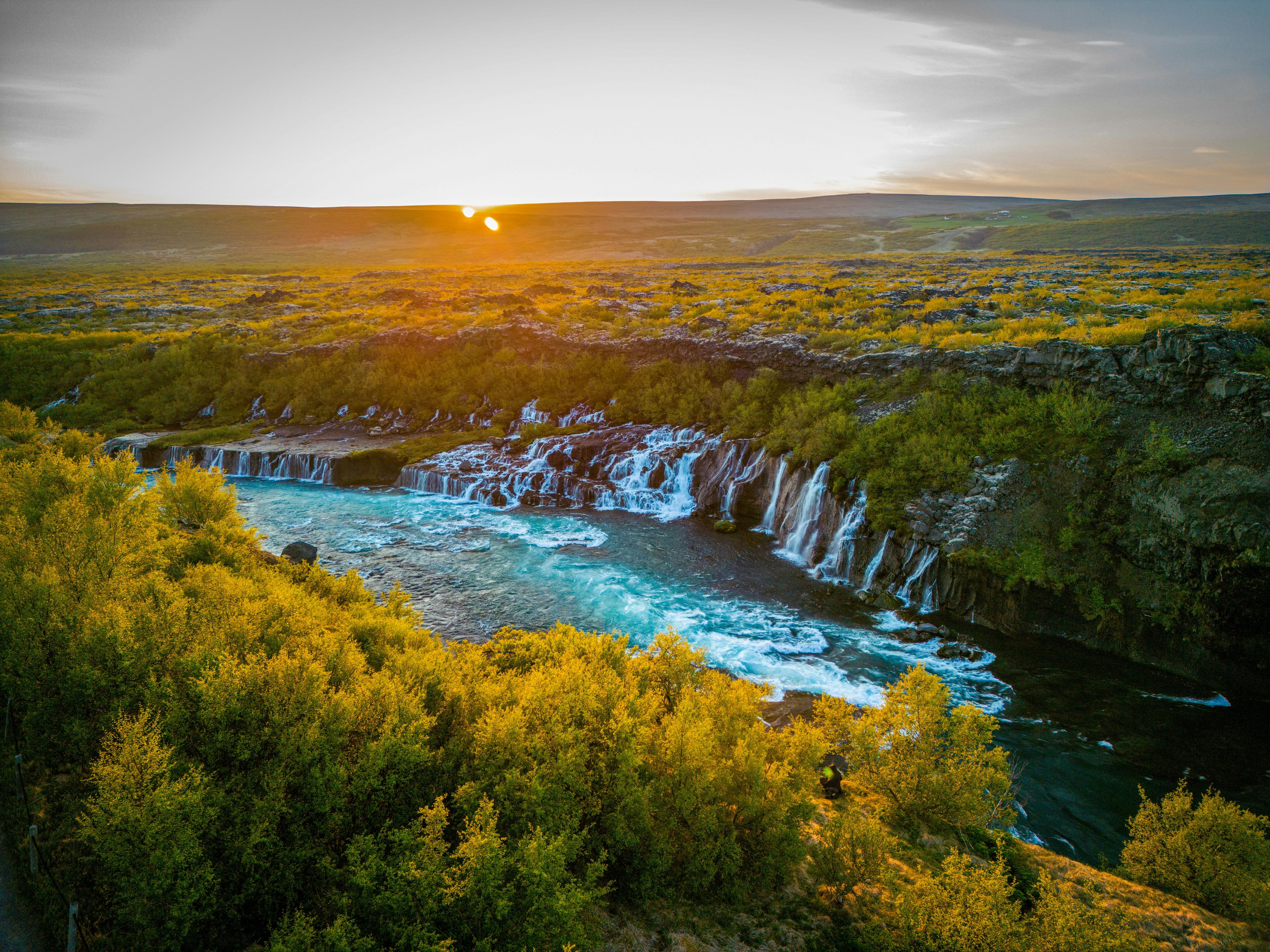
Silver Circle – West Iceland Super Jeep Tour
Uncover West Iceland's wonders on our Silver Circle Super Jeep Tour.
Questions and Answers about the Silver Circle Rpute in West Iceland
The Silver Circle is a scenic route in West Iceland, featuring stunning waterfalls, geothermal wonders, historical sites, and charming towns, offering a blend of natural beauty and cultural experiences.
The name "Silver Circle" complements the famous "Golden Circle," offering a unique route that highlights West Iceland's hidden treasures, including its waterfalls, geothermal features, and historical landmarks.
Key attractions include Hraunfossar and Barnafoss waterfalls, Deildartunguhver hot spring, Reykholt (home of Snorri Sturluson), Akranesviti Lighthouse, and the Settlement Center in Borgarnes.
Hraunfossar features crystal-clear waterfalls emerging from lava rocks, while Barnafoss is known for its dramatic rapids and a haunting legend tied to its history.
Deildartunguhver is Europe’s most powerful hot spring, with a flow rate of 180 liters per second. Its geothermal energy heats nearby towns and makes it a must-see natural wonder.
Snorri Sturluson was a medieval historian, poet, and chieftain. Reykholt was his home and remains a site of historical significance, featuring Snorralaug, Iceland's oldest man-made hot spring bath.
The Settlement Center offers exhibitions on Iceland's early settlers and the legendary Egil Skalla-Grímsson from the Icelandic sagas. One exhibition is included in the tour price.
Akranesviti Lighthouse is a historic and active lighthouse offering panoramic views of the ocean, mountains, and the surrounding coastal town of Akranes.
Yes, the route includes short walks at Grábrók volcanic crater and Glanni Waterfall, both offering stunning views and easy access for most visitors.
The route is about 146 kilometers and can be explored in a single day. However, many prefer to take it slow, staying overnight in places like Borgarnes or Húsafell.
Yes, several tour operators offer guided options, including carbon-neutral coach tours and Super Jeep expeditions, which provide deeper insights and access to remote areas.
Activities include hiking to volcanic craters like Grábrók, exploring lava caves, soaking in Krauma geothermal baths, and horseback riding at Sturlureykir Horse Farm.
Absolutely! Many attractions, like Víðgelmir lava cave, the Settlement Center in Borgarnes, and the Troll Trail at Fossatún, are suitable for families and children.
The region is rich in Icelandic history and folklore. Sites like Reykholt are tied to figures like Snorri Sturluson, and legends like Barnafoss add to the area's cultural charm.


